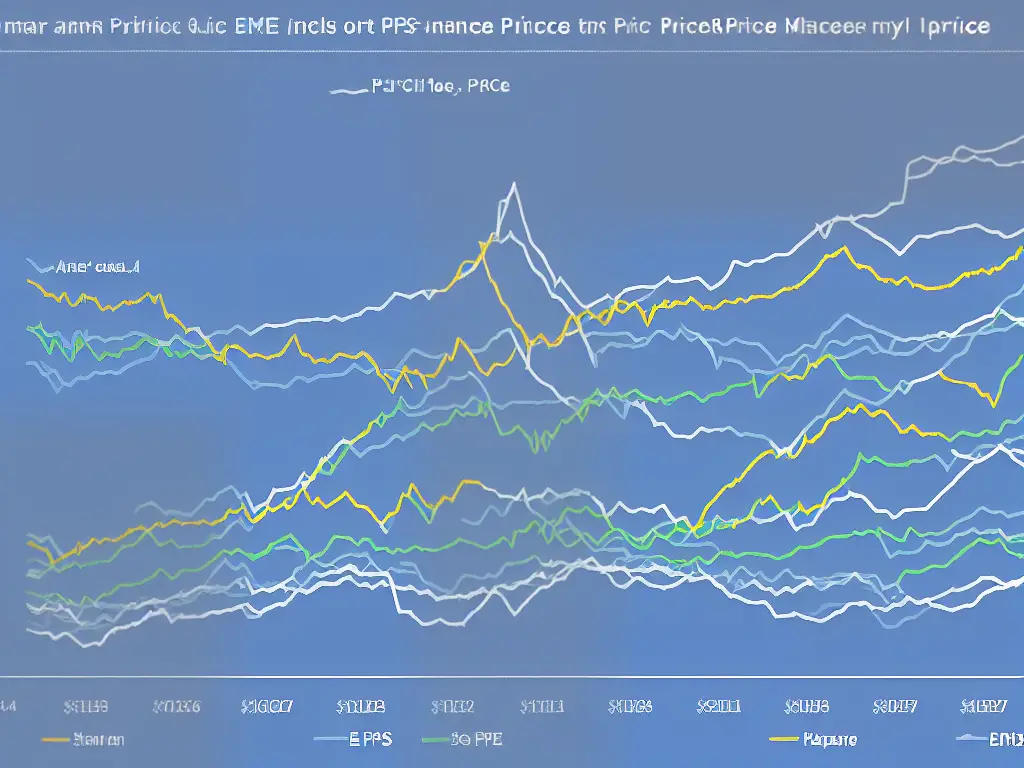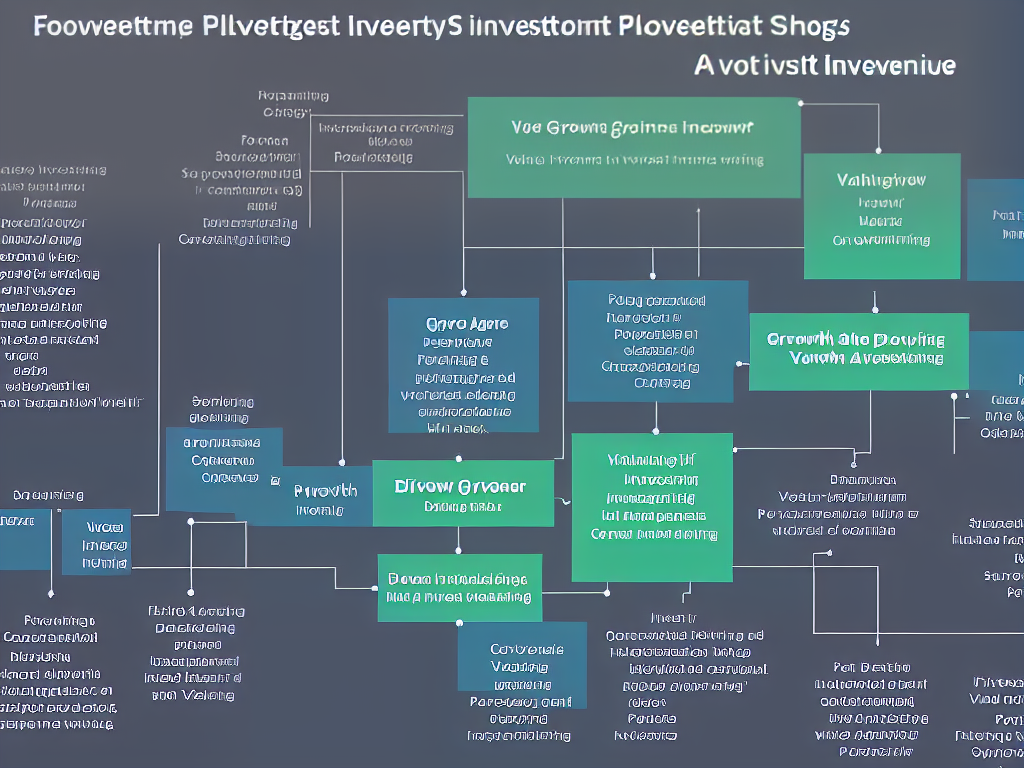Investing in stocks can be an exciting and lucrative way to grow your wealth over time. This comprehensive guide aims to provide you with the essential knowledge, tools, and strategies needed to embark on your stock investing journey. From understanding financial statements and valuations to mastering risk management and diversification, this guide covers a wide array of crucial topics to help you make informed decisions, maximize your returns, and mitigate risks in the complex world of stock investing.
Introduction to stock investing
Investing in stocks can be a rewarding way for adults to grow their wealth and achieve their financial goals. This guide will provide a basic understanding of stock investing, the history of stock markets, and the benefits and risks associated with investing in stocks.
Basic Concepts of Stock Investing:
- A. What are stocks?
Stocks represent ownership shares of a company. When you buy stocks, you essentially become a partial owner of the company. The value of your stocks is dependent on the performance of the company and the overall market. - B. Stock Exchange
A stock exchange is a marketplace where stocks are bought and sold. Some of the major stock exchanges include the New York Stock Exchange (NYSE) and the NASDAQ. - C. Market Capitalization
Market capitalization (or market cap) is the total value of a company’s outstanding shares of stock. Companies are often categorized by their market cap as large-cap, mid-cap and small-cap. - D. Dividends
Some companies distribute a portion of their earnings to shareholders in the form of dividends. Dividends can be received as cash or additional shares of stock.
History of Stock Markets
The concept of stock markets dates back to the 17th century when the Amsterdam Stock Exchange was established to trade shares of the Dutch East India Company. Over time, stock markets have evolved, and now there are numerous stock exchanges globally, allowing investors to buy and sell shares of companies worldwide.
Benefits of Investing in Stocks
- A. Potential for high returns
Historically, stocks have offered higher returns compared to other investment options such as bonds or cash. - B. Diversification
Diversification refers to spreading investments across various assets or industries to reduce risk. Investing in a diverse portfolio of stocks can help protect your investment from market fluctuations. - C. Liquidity
Stocks are generally considered a liquid investment, meaning they are easy to buy and sell as needed. - D. Ownership and influence
Owning stocks gives you voting rights in company decisions and can make you feel more connected to the businesses you invest in.
Risks Associated with Investing in Stocks
- A. Market volatility
Stock prices can fluctuate substantially, which can lead to gains or losses in your investments. - B. Lack of control
As a shareholder, you generally don’t have much direct control over the company’s decisions, potentially leading to conflicts between your interests and those of management. - C. Company performance
The success of your investment ultimately depends on the performance of the company. Poor management, declines in the industry, or economic downturns can negatively impact a company’s stock price.
Steps to Getting Started with Stock Investing
- A. Set clear financial goals
Determine why you want to invest in stocks and what your long-term financial objectives are. - B. Educate yourself
Learn about the stock market, different sectors, and industries. Understand key concepts such as stock valuation and market analysis. - C. Develop a strategy
Establish an investment strategy based on your risk tolerance, financial goals, and time horizon. - D. Open a brokerage account
Choose a broker or online trading platform to facilitate the buying and selling of stocks. - E. Diversify your portfolio
Invest in a variety of stocks in different industries to minimize risk. - F. Monitor regularly and adjust as needed
Continuously evaluate the performance of your stocks and make adjustments according to your financial goals and market conditions.
Remember, investing in stocks is not a guarantee of returns and carries inherent risks. Always conduct thorough research, assess your risk tolerance, and consult with a financial advisor if necessary to ensure that your investment journey aligns with your financial goals and expectations.

Understanding financial statements
Start by learning the basics of financial statements by familiarizing yourself with the three main types: the balance sheet, the income statement, and the cash flow statement. Each serves a unique purpose and structure.
Balance Sheet:
The balance sheet provides an overview of a company’s financial position at a specific point in time. It comprises three primary sections: assets, liabilities, and equity. Assets refer to everything a company owns, from cash to inventory to real estate, while liabilities are debts and obligations, such as loans and accounts payable. Equity is the residual interest after the liabilities have been paid off, representing the ownership stake of shareholders. To assess a company’s financial stability, you can analyze the balance sheet using financial ratios like current ratio or the debt-to-equity ratio.
Income Statement:
The income statement shows a company’s revenues and expenses over a certain period, usually quarterly or annually. The revenue section details income generated from goods or services, while expenses cover costs incurred in revenue generation, divided into COGS, operating expenses and non-operating expenses. The net income is the bottom-line profit of the company. Investors can compare companies of the same industry against each other using metrics such as gross margin or earnings per share.
Cash Flow Statement:
The cash flow statement tracks the inflows and outflows of a company’s operating, investing, and financing activities during a specific period to help investors evaluate a company’s ability to generate and utilize cash effectively. The operating activities section displays cash from the company’s day-to-day activities such as revenue from customers and cash paid to suppliers, employees, and taxes. Investing activities track cash spent or generated from buying property, mergers and acquisitions, or asset sales. Financing activities display cash transactions involving borrowing, issuing or repurchasing equity, and paying dividends to shareholders.
Finally, investors typically use financial ratios, such as P/E, ROE, or P/S, to compare and assess companies within the same industry, identifying trends and evaluating overall financial health. By understanding financial statements, investors can gain valuable insights into a company’s performance, leading to informed investment decisions.

Stock valuation methods
Stock valuation methods help investors and analysts determine the intrinsic value of a stock, allowing them to make informed investment decisions. This analysis helps determine whether a stock is overvalued or undervalued relative to its market price. Here are some of the common stock valuation methods and how to use them:
1. Price-to-Earnings (P/E) Ratio
The P/E ratio is one of the most widely used stock valuation methods. It compares a company’s current market price to its earnings per share (EPS).
Formula: P/E Ratio = Market Price per Share / Earnings per Share (EPS)
To use this method, you need to obtain the company’s market price per share and its EPS, which is usually available in its financial statements. A high P/E ratio generally indicates that the market has high expectations for the company’s future growth, while a low P/E ratio may suggest that the stock is undervalued.
2. Dividend Discount Model (DDM)
The DDM is a valuation method used for stocks that pay dividends. This model assumes that the value of a stock is equal to the present value of all its future dividend payments.
Formula: Stock Value = [Dividend per Share / (Required Rate of Return – Dividend Growth Rate)]
To use this method, you’ll need to know the company’s dividend per share, the required rate of return (also known as the discount rate), and the dividend growth rate. You can usually find this information in the company’s financial statements or investor presentations.
3. Discounted Cash Flow (DCF)
The DCF method is a more advanced valuation model that calculates the intrinsic value of a stock based on the present value of its projected future cash flows. This method is more complex than others, as it requires several assumptions and estimates.
Formula: Stock Value = ?[Cash Flow in Year (n) / (1 + Discount Rate)^n]
To use the DCF method, follow these steps:
- Estimate the company’s future cash flows for a specific period (usually 5 to 10 years). You can use historical financial statements and industry analysis to create these projections.
- Choose an appropriate discount rate that reflects the riskiness of the stock. You can use the company’s weighted average cost of capital (WACC) as a starting point.
- Calculate the present value of each cash flow using the formula mentioned above.
- Add up the present values of all future cash flows to obtain the total intrinsic value of the stock.
- Divide the total intrinsic value by the number of shares outstanding to get the intrinsic value per share.
4. Book Value
The book value of a stock represents the company’s net worth, which is calculated by subtracting total liabilities from total assets. This method of valuation is simple and easy to understand, but it may not accurately represent the true value of a growing or innovative company.
Formula: Book Value per Share = (Total Assets – Total Liabilities) / Total Number of Shares Outstanding
To use this method, find the company’s total assets, total liabilities, and total number of shares outstanding in its financial statements. Calculate the difference between total assets and total liabilities, then divide the result by the number of shares outstanding.
These stock valuation methods can help you determine the intrinsic value of a stock, allowing you to make more informed investing decisions. Keep in mind that these methods have their limitations and should be used in conjunction with other financial analysis tools and your own investment goals. Always conduct thorough research and consult a financial advisor before making any investment decisions.

Stock market indices and sectors
A stock market index represents a specific section of the stock market. It measures the weighted average of a group of stocks that represent a market or a sector within a market. The Dow Jones Industrial Average (DJIA), the S&P 500, and the Nasdaq Composite Index are a few examples of some major stock market indices.
How Are Indices Calculated?
There are two primary methods for calculating stock market indices: price-weighted and market capitalization-weighted.
- Price-weighted index: This method calculates the index value based on the price of individual stocks. The Dow Jones Industrial Average is an example of a price-weighted index – the higher the stock price, the greater its impact on the index.
- Market capitalization-weighted index: This method calculates the index value based on the market capitalization of individual stocks (stock price multiplied by the number of outstanding shares). The S&P 500 and Nasdaq Composite Index are examples of market capitalization-weighted indices – the higher the market capitalization, the greater its impact on the index.
Major Stock Market Indices:
There are some major stock market indices that investors should get familiar with:
- Dow Jones Industrial Average (DJIA): The DJIA comprises 30 of the largest and most influential companies in the US, across various industries, except transportation and utilities.
- S&P 500: The S&P 500 index consists of 500 of the largest publicly traded companies in the US across various sectors. It is considered a good representation of the overall US stock market.
- Nasdaq Composite Index: The Nasdaq Composite is made up of over 2,500 companies listed on the Nasdaq stock exchange, including companies from various sectors, but primarily dominated by technology and internet-related companies.
Sectors Within Stock Market Indices:
It’s common for stock market indices to be divided into multiple sectors, representing different industries within the economy, such as:
- Technology
- Health Care
- Finance
- Consumer Discretionary
- Consumer Staples
- Energy
- Industrials
- Materials
- Utilities
- Real Estate
How to Choose Sectors to Invest?
A diversified investment portfolio is created by investing in multiple sectors, which helps to spread the risk across different industries and protect investments from market volatility. When choosing sectors to invest in, consider your investment goals, risk tolerance, and the current economic climate.
How to Research Companies Within Chosen Sectors?
Investors must research the companies within the chosen sectors. Look at company profiles, financial statements, and recent news to understand their performance and growth potential.
How to Open a Brokerage Account?
To invest in stocks, investors need to open a brokerage account. Choose a broker that provides access to various investment options, easy-to-use trading platforms, and low fees.
How to Start Investing in Stocks?
After setting up a brokerage account, investors can start buying shares of individual companies or exchange-traded funds that track specific stock market indices or sectors. Maintaining a well-diversified portfolio requires monitoring your investments and making adjustments as needed.
A Reminder on Risk:
Investing in stocks carries inherent risks, and past performance is never a guarantee of future returns. Research is essential, maintain a diversified portfolio, and take a long-term investment perspective to reduce risk.

Types of stock orders and trades
Market Orders: Market orders are the most basic type of stock order and are executed at the best available price as soon as possible. However, the actual execution price may differ from the price when the order was placed, especially for volatile stocks or in a rapidly changing market.
Limit Orders: Limit orders offer more control over the execution price, but there’s a risk that the order may not get filled completely or at all if the specified price isn’t reached. You set the maximum price to buy or minimum price to sell a stock.
Stop-loss Orders: A stop-loss order is a type of limit order that helps you minimize losses automatically. You set a stop price at which the order will be triggered. Once the stop price is reached, the order becomes a market order to sell the stock at the best available price.
Stop-limit Orders: A stop-limit order combines aspects of stop-loss and limit orders. When the stop price is reached, the stop-limit order becomes a limit order to buy or sell the stock at a specific price, rather than a market order.
Placing an Order: To start the process, you need to have a brokerage account. You choose a broker aligning with your investing goals, and then place an order specifying the type of stock order, number of shares, and the stock symbol.
Route to Exchange: After placing an order, your broker will route it to a stock exchange or other trading venue depending on your broker’s order routing practices.
Matching and Execution: The exchange or trading venue will try to match your order with another party willing to buy or sell at the same price. For market orders, this usually happens quickly; whereas, for limit and stop orders, it may require a longer waiting period or may not be executed at all if the specified price isn’t reached.
Confirmation and Settlement: The broker will send you a confirmation detailing the specifics of the trade once the order is executed. Finally, the completed trade will settle within a set number of days, and the funds, or purchased stocks, will be transferred to the respective accounts.

Analyzing individual stocks
Investors interested in making informed decisions about their investment portfolio need to know how to analyze individual stocks. Such skill involves assessing a company’s overall financial health, growth potential, management, and other factors to identify potentially profitable stocks to invest in or avoid. The following are ten steps to follow to analyze individual stocks effectively.
1. Choose a stock to analyze:
Do some preliminary research by selecting a company or industry that you are interested in. Look for businesses with a strong market presence, known for their good performance, innovation, and management.
2. Read the company’s financial statements:
Review a company’s balance sheet, income statement, and cash flow statement to understand its financial health. Such information is usually available on a company’s investor relations page or through financial websites like Yahoo Finance or Google Finance.
3. Review key financial ratios:
Assess the company’s financial health by calculating significant financial ratios such as the Price-to-Earnings (P/E) ratio, Price-to-Book (P/B) ratio, and Dividend Yield. These ratios can help you understand if a stock is over or undervalued and whether the company is financially strong or weak.
4. Examine the company’s growth potential:
Look for companies with strong growth trajectories in sales, profits, and market share. Assess a company’s business model and growth strategy and compare it with its competitors. Identify potential risks or growth barriers such as increasing competition or regulatory challenges.
5. Evaluate the company’s management:
Analyze the experience, qualifications, and track record of the company’s management team. A strong management team is essential for a company’s success and growth. Look for any recent changes in top management positions and research their background.
6. Understand the competitive landscape:
Research the company’s competitors to understand their strengths, weaknesses, and market share. Determine if the company has a unique product or service offering that sets it apart from its competitors or if it faces significant competition in its industry.
7. Assess the company’s dividend history:
Check a company’s dividend history and policy if you are interested in generating income from your investment. A company with a consistent dividend-paying history is usually considered a safer investment than those with volatile or no dividend payouts.
8. Analyze industry trends and macroeconomic factors:
Study overall market trends and macroeconomic factors affecting the industry in which the company operates. Understand how these factors can impact the company’s future performance and stock price.
9. Make a buy, hold, or sell decision:
After conducting a thorough analysis of the company’s financial health, growth potential, management, and industry factors, determine whether the stock is a good investment for your portfolio. Decide to buy if the company’s prospects are strong, hold if unsure, or sell if the stock is overvalued or has weak future prospects.
10. Monitor your investment:
Continue to monitor a stock’s performance and any changes in the company or industry that may impact the investment. Reassess the investment periodically to ensure it still aligns with your financial goals and risk tolerance.
By following these steps, investors can make informed decisions when it comes to investing in stocks. Over time, they can develop their investment style and preferences, honing their ability to analyze individual stocks and maximize their investment returns.

Investment strategies and styles
Investing in stocks can be a great way to grow your wealth and secure your financial future. To be successful in the stock market, it’s important to understand various investment strategies and styles. Here, we’ll outline four popular strategies: growth investing, value investing, dividend investing, and passive investing.
Growth Investing
- Research companies with consistent revenue and earnings growth.
- Look for stocks with high relative strength, which measures how well a stock is performing compared to the overall market.
- Be prepared for volatility, as growth stocks can experience significant price fluctuations.
- Diversify your portfolio to minimize the impact of poor-performing stocks.
Value Investing
- Learn how to analyze financial statements to determine a company’s intrinsic value.
- Look for companies with low price-to-earnings (P/E) ratios, high dividend yields, or low price-to-book (P/B) ratios.
- Develop patience, as it may take time for the market to recognize a stock’s true value.
- Diversify your portfolio to spread risk across different sectors and industries.
Dividend Investing
- Look for companies with a consistent history of paying dividends and increasing their dividend payouts over time.
- Analyze dividend payout ratios to ensure the company can sustain its dividend payments.
- Diversify your portfolio with stocks from different sectors that pay dividends.
- Reinvest your dividends to take advantage of the power of compounding and grow your wealth over time.
Passive Investing
- Research different index funds and ETFs to find ones that align with your investment goals and risk tolerance.
- Dollar-cost average by investing a fixed amount at regular intervals (e.g., monthly) to reduce the impact of market volatility.
- Keep an eye on fees and expenses, as these can eat into your returns over time.
- Rebalance your portfolio periodically to maintain your desired level of risk and diversification.
Remember that no one-size-fits-all approach exists when it comes to investing in stocks. Understanding these four investment strategies and styles can help you make informed decisions about which approach works best for your financial goals, risk tolerance, and time horizon. Always conduct thorough research, stay informed about market trends, and consider consulting with a financial advisor to ensure you’re making the best possible investment decisions.

Risk management and diversification
Risk management in stock investing refers to the process of minimizing the possibility of financial loss. This typically involves evaluating the different types of risks associated with investments and managing the allocation of assets in your portfolio.
By understanding your personal risk tolerance, you can make informed decisions about how much risk you are willing to accept in exchange for the potential return on your investment.
Your risk tolerance is influenced by your financial goals, investment time horizon, and your level of comfort with market fluctuations. To assess your risk tolerance, think about how you would feel if your portfolio dropped in value by a certain percentage. Understanding your own comfort with risk will help you craft a diversified portfolio that aligns with your financial goals and emotional well-being.
Diversifying your investments is key to managing risk. It means spreading your money across a range of different stocks, sectors, and even asset classes to reduce the impact of poor performance in any one area on your overall portfolio. Some ways to diversify your investments include:
- Investing in a mix of stocks from different sectors: By investing in companies from different industries such as technology, healthcare, consumer goods, and financial services, you can minimize risk by reducing your exposure to negative trends in any one sector.
- Incorporating different asset classes: Besides stocks, consider including other asset classes such as bonds, real estate, or commodities in your portfolio. These investments tend to have a lower correlation with stock market fluctuations and can help stabilize your portfolio.
- Geographic diversification: Investing in companies from different countries or regions can provide protection against risks associated with economic downturns or political instability in any one country.
- Utilizing investment funds: Mutual funds, index funds, and exchange-traded funds (ETFs) can provide instant diversification as they hold a broad range of securities within the fund.
Risk management is an ongoing process that requires regular monitoring and adjustments. As you gain more experience in investing and as your financial goals change, you may need to reevaluate your risk tolerance and adjust your investment strategy accordingly. Additionally, market conditions and the performance of individual investments may necessitate rebalancing your portfolio to maintain your desired diversification and risk level.
Regular monitoring and adjustments to your portfolio will ensure that your investments remain aligned with your financial goals and risk tolerance.

Online brokerages and trading platforms
Research and compare online brokerages and trading platforms. Start by exploring different online brokerage firms and trading platforms that are available. Some popular brokerages include E*TRADE, Fidelity, TD Ameritrade, and Robinhood. The popular trading platforms include Ally Invest, Interactive Brokers, and Webull. Remember that not all platforms offer the same services – some may be more suited to beginner investors, while others cater to more advanced traders.
Assess your investing needs. Understanding your own needs and goals is crucial when selecting the best online brokerage or trading platform. Consider factors like your investment goals, the amount you plan to invest, and your risk appetite. Additionally, determine the type and frequency of trades you plan to make, so you can choose a brokerage firm that best supports these activities.
Evaluate the features and tools. Different platforms provide different features and tools to help with your investing experience. Some common features that you might want to look for in a platform include robust research tools, a wide range of investment products, account management options, and a user-friendly interface.
Compare fees and costs. When evaluating different online brokerages and trading platforms, it’s essential to consider the fees and other costs associated with their services. Typical fees include account opening fees, trading fees, account maintenance fees, and withdrawal fees. Some platforms may also charge additional fees for accessing premium research content or other advanced features. Be sure to compare costs across different platforms to find the best fit for your investing needs.
Examine customer service and support. When it comes to trading stocks, having timely assistance and support from your brokerage firm is vital. Research the reputation of each platform’s customer service, and ensure that they can provide the help you need, when you need it.
Read reviews and recommendations. Before making a decision, read online reviews and recommendations from other users who have experience with the platforms you’re considering. This can provide valuable insight into the pros and cons of each platform, as well as offer useful tips to help you make the best choice for your needs.
Open an account. Once you have researched various platforms and compared their features and fees, select the one that best meets your needs, and open an account. Most online brokerage firms offer quick and straightforward online account opening processes that involve filling out an application form, providing necessary identification documents and linking a bank account to fund your new trading account.
Familiarize yourself with the platform. After opening your account, spend some time familiarizing yourself with the platform’s interface and features. Ensure you understand how to use various research tools, make trades, and manage your account settings.
Start investing. Now that you have an account with an online brokerage or trading platform, you can begin investing in stocks. Start by researching stocks that interest you, and consider building a diversified portfolio to manage risk. Remember to monitor your investments regularly, but also maintain a long-term perspective.
Continue to learn and grow. Investing in stocks is an ongoing learning process. Continue to expand your knowledge by reading articles, attending webinars, or joining investment communities. Additionally, reassess your investment goals and strategies periodically to ensure you stay on track with your financial objectives.

Tax implications of stock investing
Investing in stocks can be a rewarding and effective way to build wealth over time. However, it’s essential to understand the tax implications associated with stock investing. This guide will outline the main tax considerations, including the taxation of dividends and capital gains, as well as how to minimize tax liabilities.
1. Taxation of Dividends:
When a company declares dividends, the shareholders receive a portion of the company’s profits in the form of cash or additional shares. Dividends are considered taxable income by the IRS, and the tax rate depends on whether they are qualified or non-qualified dividends.
- a. Qualified Dividends: These are typically taxed at a lower rate than non-qualified dividends as they meet specific criteria set by the IRS. For most taxpayers, the tax rate for qualified dividends is 0%, 15%, or 20%, depending on your income.
- b. Non-Qualified Dividends: These are taxed as ordinary income, subject to the individual’s marginal income tax rate.
2. Taxation of Capital Gains:
When you sell a stock for more than what you bought it for, the profit is considered a capital gain. Capital gains taxes depend on the holding period of the stock: short-term or long-term capital gains.
- a. Short-term Capital Gains: If you held the stock for one year or less, the profit is a short-term capital gain, and the tax rate corresponds to your marginal income tax rate.
- b. Long-term Capital Gains: If you held the stock for more than one year, the profit is a long-term capital gain. Long-term capital gains are taxed at a lower rate, which is 0%, 15%, or 20%, depending on your income.
3. Minimizing Tax Liabilities:
Several strategies can help you reduce your tax liability when investing in stocks:
- a. Hold Stocks for a Longer Period: By holding your stocks for over a year, you’ll qualify for the lower long-term capital gains tax rate.
- b. Tax-Loss Harvesting: If you have losing positions, consider selling them to offset capital gains. This strategy allows you to use losses to lower your overall tax bill while reevaluating your investment strategy.
- c. Maximize Tax-Advantaged Accounts: Use retirement accounts such as 401(k) or IRAs to your advantage. These accounts have tax benefits that can help reduce your overall tax liability on growth and income.
- d. Invest in Tax-Exempt Securities: Municipal bonds and certain ETFs have tax-exempt status, allowing you to receive tax-free income.
Understanding the tax implications of stock investing is crucial for making informed decisions and effectively managing your portfolio. Remember to consult with a tax professional or financial advisor if you have any questions or concerns regarding your specific situation. Through diligent planning and tax-efficient strategies, you can make the most of your investments and build a strong financial future.

By mastering the concepts, strategies, and tools outlined in this guide, you will be well-equipped to navigate the stock market and make informed investment decisions. Empower yourself with financial knowledge and take charge of your financial future by diving deep into stock investing. Always remember to stay patient, disciplined, and persistent in your pursuit of investment success. Happy investing!


